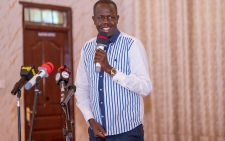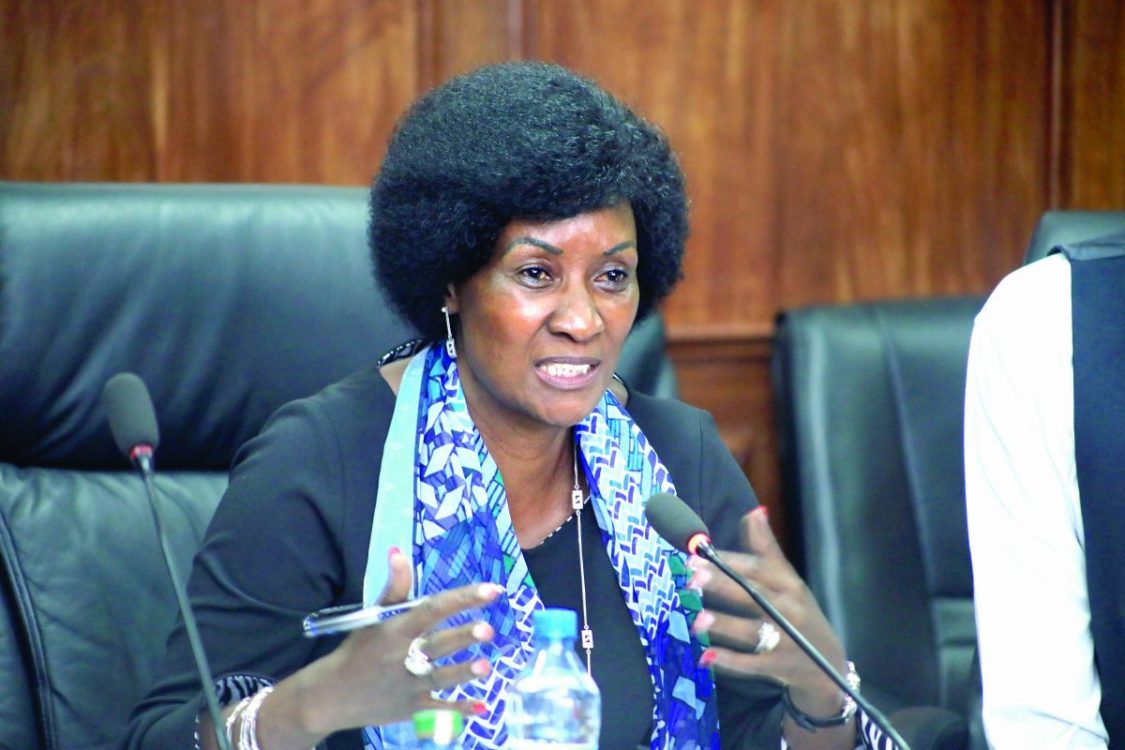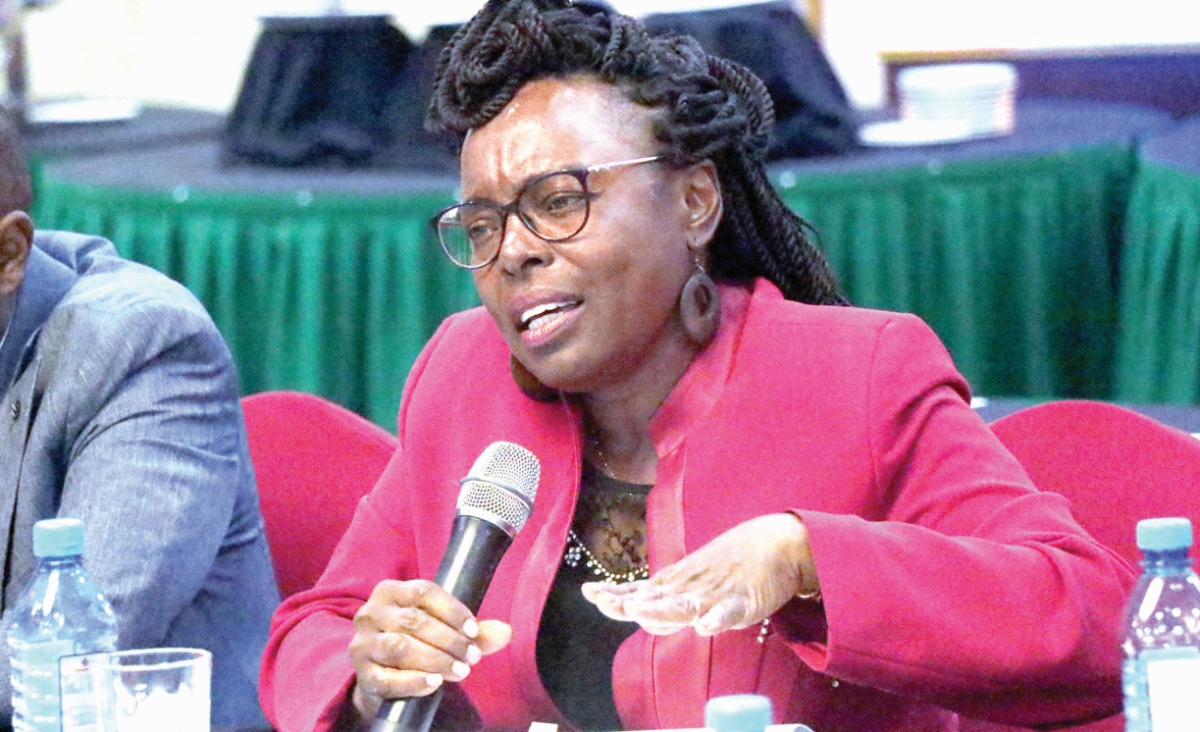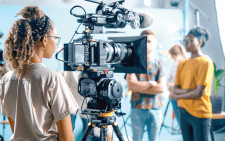How we found out about daughter’s hearing loss
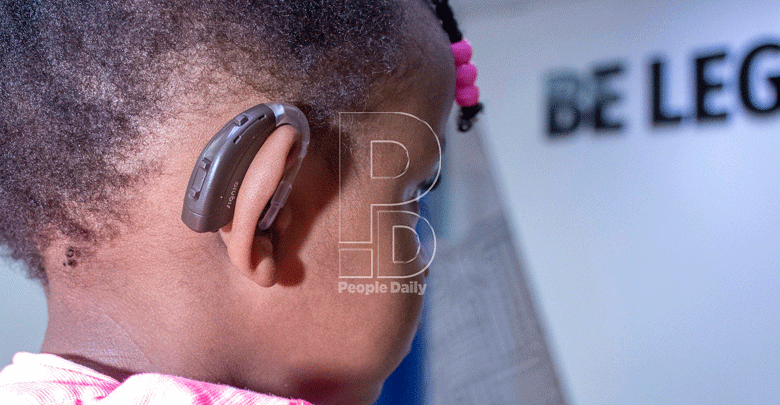
Milliam Murigi @millymur1
Learning and wanting to communicate is something that occurs naturally in all children.
And Gabriella Gathoni’s failure to achieve this when celebrating her second birthday got her parents worried.
Though they thought it was not a major problem, but just a delayed milestone, Gathoni’s parents Esther Wanjiru and Geoffrey Amakanji decided to seek professional advice at Gertrude’s Hospital in April.
At this point, there was no indication she had hearing loss since she was making some cooing noises.
The couple was surprised when the doctor referred them to an audiologist. Naively, they walked into the audiologist’s room just to follow the orders.
With no hearing loss cases in their family history, they never thought their only daughter could be suffering from it, until the news was broken to them.
From the audiogram report, their daughter was diagnosed with severe to profound hearing loss.
Severe-to-profound hearing loss is defined as having a hearing level average that is greater than 70 decibels (dB), which means that without amplification, access to communication under normal conditions are extremely limited.
Normal hearing range is usually between 0-26 dB, mild hearing loss covers a range of 26-40 dB, moderate hearing loss covers 41-55 dB and sever hearing loss covers a range of 56-70 dB.
Costly implant
“We did not expect to hear such news; it came as a shocker to both of us. We couldn’t believe it. At first, we thought it was a temporary condition, and learning that it is a lifetime condition made things even worse. We were in denial for about one month,” says Esther.
Still, in disbelief, the couple sought a second and third opinion but the results were the same.
Realising nothing was going to change, they decided to do more research about the condition.
During the research, they learned that hearing loss treatment depends on the baby’s overall health and the cause of the hearing loss.
“One of my biggest worries after my daughter’s diagnosis was that we will never be able to communicate with her, have the easy conversations we have with other family members. However, after the research, my fears were dispelled,” Esther adds.
With this knowledge, they engaged their doctor even further and learnt that the only treatment that befits their daughter’s condition is a cochlear implant popularly known as CI.
This is a hearing implant that bypasses the damaged hair cells in the inner ear and transmits signals directly to the brain via the auditory nerve.
CIs makes it possible for people to hear sounds even if they have damaged hair cells in the inner ear and have a severe or profound hearing loss.
The device is developed such that one part of the implant sits on the head behind the ear and the other parts are placed inside the ear during surgery. The implant gives a baby a sense of sound.
However, Gabriella was put on hearing aids as the first step in their journey towards a CI.
For a month now, she has been putting on hearing aids to help her hear environmental sounds and to stimulate the nerves.
Hearing aids make sounds louder. Although she does not speak yet, Gabriella has larnt lip reading and uses signs to commuicate.
The cost implication of the implant also made the doctor put her on hearing aids first.
They require about Sh6 million for the implant and this is way too much beyond their ability.
They are urging well-wishers to help them raise the said amount for her treatment because the earlier she gets the implant done the better.
“We feel overwhelmed with some choices we are being asked to make so early in our child’s life.
We have lots of questions, but what matters more to us now is seeing our baby get better.
We hope we will be able to raise the said amount for her implant since it is only through implant she will be able to hear, ” Esther adds.
Gabriella is not the only child suffering from hearing loss. Data from World Health Organisation shows that out of 360 million persons in the world with disabling hearing loss, 32 million (about nine per cent of these) are children.
According to audiologist Nancy Kemunto from MP Shah Hospital, hearing loss is a common birth defect that can affect a baby’s ability to develop speech, language, and social skills.
That is why the American Centres for Disease Control and Prevention (CDC) and the American Academy of Paediatrics (AAP) recommend all babies get screened for hearing loss before leaving the hospital after birth or before they’re one month old.
“Hearing loss can be partial or total lack of ability to perceive sound. It can be present at birth or acquired at a point in one’s life.
Can affect one ear (unilateral deafness) or both ears (bilateral deafness). It can also be mild, moderate, severe or profound,” she says.
And what causes hearing loss in children? Kemunto says some causes include, genetic factors, infections, toxicity, birth complications, prenatal infections, and loud noises.
According to the US CDC one out of four cases of hearing loss in babies is due to maternal infections during pregnancy, complications after birth, and head trauma.
About one of two cases of hearing loss in babies is due to genetic causes, and about one of four babies born with hearing loss, the cause is unknown.
Kemunto says children with hearing loss may face some difficulties such as inability to acquire spoken language, interaction with other children, and may end up feeling lonely.
The best thing, however, is early screening, diagnosis and treatment can help children with hearing loss develop speech, language, and social skills.
Signs and symptoms
She adds that without new-born hearing screening and tests, signs of hearing loss can be hard to find because sometimes babies and children seem to be very alert, so you think they can hear you well, but they are actually using their other senses to know what is going on around them. Or, as they get older, they learn to read your lips on their own.
However, some signs one can look out for in babies include a child not being startled in presence of loud sound, not turning the head to the source of sound at around six months of age, and at one year they are not saying any word.
In older children, having or developing hearing loss may lead to them not having speech or if they have speech it will not be clear.
When they are given instruction, they may not follow and one may think that they are either ignoring you or not paying attention.
Older children keep saying ‘huh’ when they are being talked to and trying to lean their heads to get their ears close to the speaker.
When watching TV, they will put a higher volume. It is important that parents are keen and take their children for hearing loss screening as soon as possible.
“The good news is that there are various ways to diagnose hearing loss and also help those that are found to be hard of hearing.
There are tests such as Otoacoustic Emissions (OAE) Brainstem Auditory Evoked Responses (BERA) and Pure Tone Audiometry (PTA),” Kemunto adds.
OAE is a test used to find out how well your inner ear, or cochlea, work; BERA measures how your brain processes the sounds you hear and PTA is a behavioral test used to measure hearing sensitivity.
Children found to be hard of hearing are treated according to their degree of loss.
Options include surgery for CI, hearing aids programmed according to the hearing loss and sign language and lip-reading to add on to more ways to communicate.
And how can we prevent hearing loss in children? Kemunto says all pregnant women need to attend prenatal care so that the health of the baby is guaranteed.
Proper and timely immunisation of the children to avoid infections that may lead to hearing loss is of great importance also.
Parents should also not expose their children to loud noise via headphones or earphones.
Parents should also avoid medication with over-the-counter antibiotics because some are harmful to the ear if not prescribed by the doctor for the correct dose and for purpose. Care should also be taken not put objects in the ears.
“Use of the cotton buds to clean the ears should also be discouraged for it may lead to accumulation of wax in the ear or may lead to perforation of the eardrum or bruising and the skin in the ear canal leading to infection, which eventually leads to hearing loss,” she adds.


